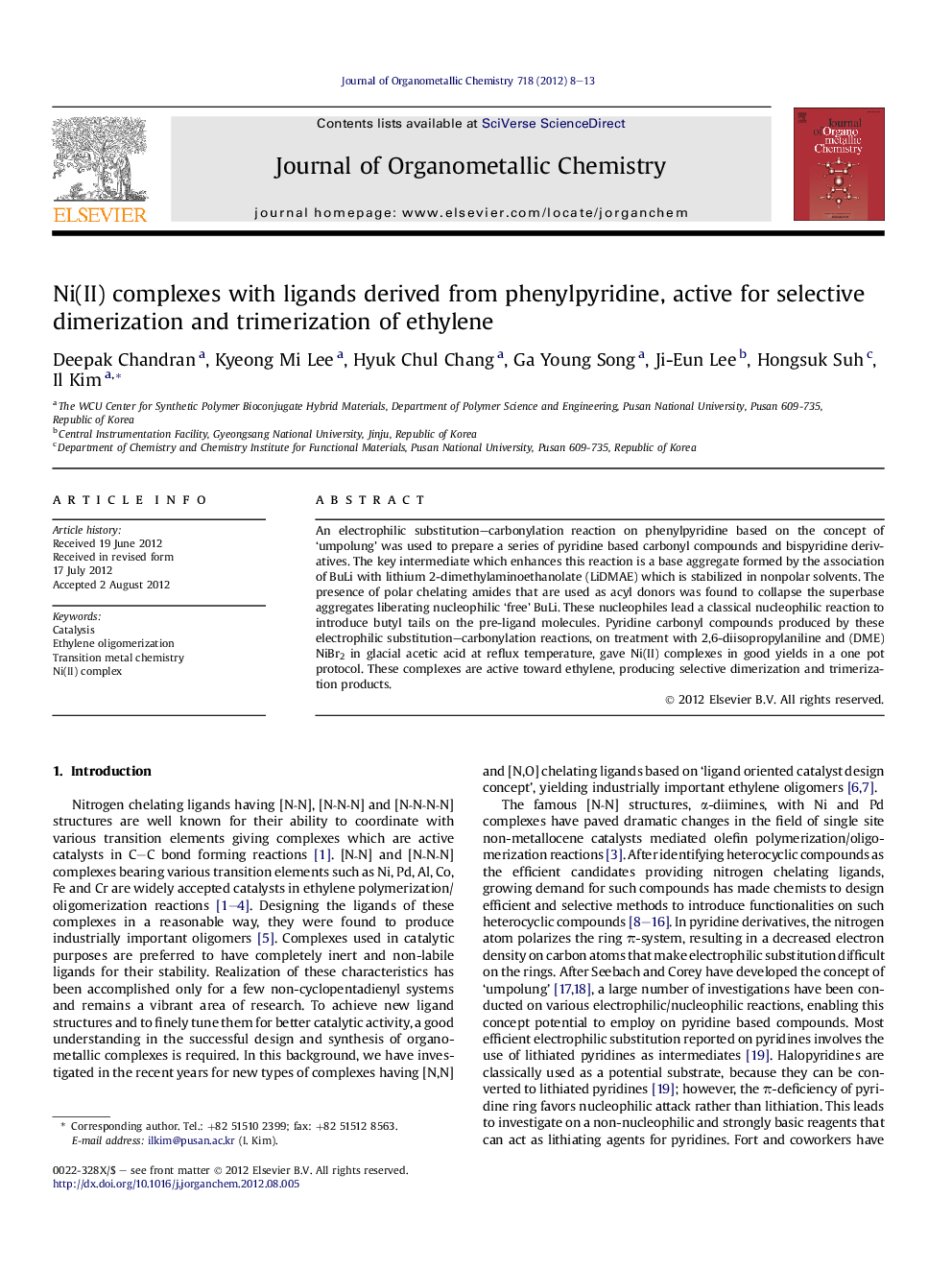| Article ID | Journal | Published Year | Pages | File Type |
|---|---|---|---|---|
| 1323041 | Journal of Organometallic Chemistry | 2012 | 6 Pages |
An electrophilic substitution–carbonylation reaction on phenylpyridine based on the concept of ‘umpolung’ was used to prepare a series of pyridine based carbonyl compounds and bispyridine derivatives. The key intermediate which enhances this reaction is a base aggregate formed by the association of BuLi with lithium 2-dimethylaminoethanolate (LiDMAE) which is stabilized in nonpolar solvents. The presence of polar chelating amides that are used as acyl donors was found to collapse the superbase aggregates liberating nucleophilic ‘free’ BuLi. These nucleophiles lead a classical nucleophilic reaction to introduce butyl tails on the pre-ligand molecules. Pyridine carbonyl compounds produced by these electrophilic substitution–carbonylation reactions, on treatment with 2,6-diisopropylaniline and (DME)NiBr2 in glacial acetic acid at reflux temperature, gave Ni(II) complexes in good yields in a one pot protocol. These complexes are active toward ethylene, producing selective dimerization and trimerization products.
Graphical abstractA new strategy to produce pyridine-based ligands with various structures from a single reaction has been developed and Ni(II) complexes prepared by using theses ligands were tested for ethylene oligomerizations.Figure optionsDownload full-size imageDownload as PowerPoint slideHighlights► A series of [NˆN] type bidentate Ni complex was synthesized. ► Different structured ligands were produced in a single reaction. ► Solid state structure of imino-pyridyl Ni complexes was identified. ► All the complexes showed high activity toward ethylene.
